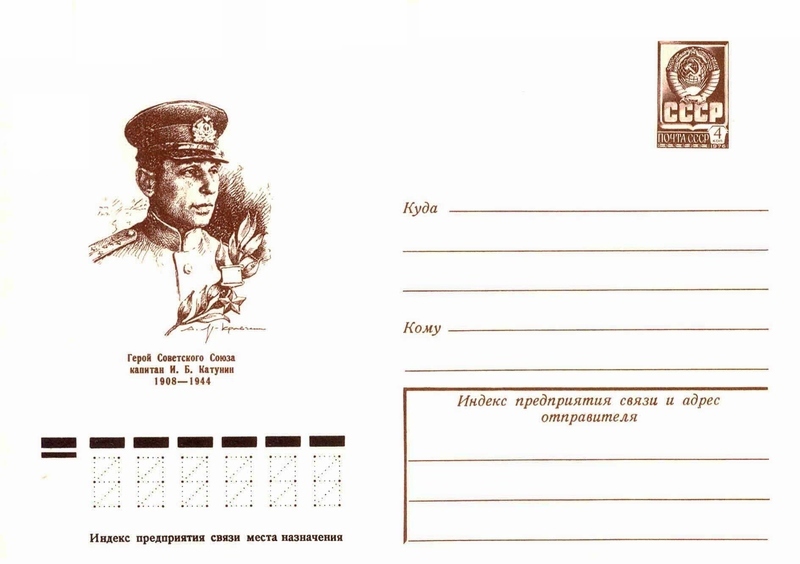Ilya Katunin was born in 1908 in the city of Gomel (Belarus), in a working-class family. His father Berl owned a coach and a horse, and he made his living by driving passengers to and from the city's railway station. However, his income hardly sufficed to support a family of six: himself, his wife Dvosia, and their four children (three sons and one daughter). In 1914, following the outbreak of World War I, Berl was drafted into the Russian army, and came back disabled. He died in 1918 – during a pogrom, according to some unconfirmed information. Dvosia worked as a cleaner in a printing house. Her meager salary kept the family in a state of semi-starvation, and she was forced to give Ilya up to an orphanage. There, he finished school and learned the trade of a locksmith. He then briefly worked at a machine tool factory in Gomel. Upon being drafted into the Red Army, he was asked by the draft committee where he would like to serve. Ilya declared that his dream was to be a flyer. He was an avid sportsman, physically robust and in good health. The committee granted his request.
In 1932-1934, Katunin studied at the Eysk Military Aviation School, which trained naval pilots. From 1934, he worked as an instructor at the Bezhetsk Aviation Club (Belarus), and later as head of the Aviation Unit at the Briansk Aviation Club. In 1940, Katunin was sent to undergo flight personnel training. Before he could complete it, the Soviet-German War broke out in June 1941. He reenlisted in the Red Army, but was kept in the Soviet interior, despite his express wishes and repeated requests to be sent to the front. From July 1941, Lieutenant Katunin served as an instructor at the Military Aviation School for basic training.
Finally, his wish was granted, and in 1942 he was assigned to the 1st Reserve Aviation Regiment of the Navy Air Force. In the spring of 1943, he was sent to the front lines, as part of the 46th Assault Air Regiment of the Northern Fleet. He was immediately assigned to combat duty. While serving in this air regiment, he fought the enemy with exceptional skill, sinking German transport vessels and warships. In a single year, he made twelve successful assault missions. His last, and most successful, combat mission took place on April 23, 1944 in northern Norway.
On that day, an enemy convoy left Varanger Fjord in Norway. Soviet reconnaissance aircraft detected their departure and established that there were nine large supply ships, and as many as twenty other vessels, in the convoy. It was accompanied by Messerschmitts and antisubmarine aircraft. The Nazis were determined to deliver their supplies.
A group of six IL-2 aircraft, with a cover of eight bombers, were ordered to destroy the enemy convoy of eight transports and twenty other vessels (including six destroyers). Katunin was put in charge of the group. The other pilots saw him boldly fly ahead. However, his IL-2 plane was immediately hit and engulfed in smoke and flame. Being an experienced pilot, Katunin quickly turned his plane upward, and then dove straight into an enemy transport from a height of 1300 meters. There was a powerful explosion, and the ship sank. For this last flight in his life, Ilya Katunin was posthumously awarded the title of Hero of the Soviet Union, along with the Order of Lenin. Furthermore, fifteen years after that flight Katunin was permanently inscribed in the lists of the aviation regiment, and a settlement in Arkhangelsk Oblast was named in his honor. Additional posthumous honors followed in subsequent years: memorial plaques, monuments, streets named after him, and so on. One such plaque was installed at the entrance to the machine tool factory in Gomel where he had worked.
Two weeks after Ilya Katunin's heroic death, his brother Yitzhak was killed in action. His second brother, Shlomie, also fell in battle shortly thereafter.





.jpg)


